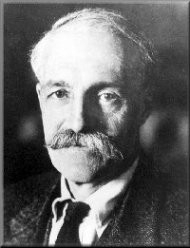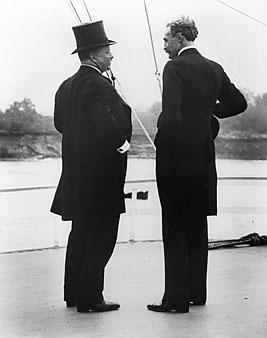Pinchot, Gifford (Environmental Law & Policy)
Pinchot, Gifford
Gifford Pinchot (1865-1946), America’s first native professionally trained forester and pioneer in the field of forest conservation. After completing forestry school in Germany, Pinchot returned to the U.S. to establish one of the United States’ first model forests, which lay on the Biltmore Estate of Cornelius Vanderbilt in Asheville, North Carolina. He took over administration of the national forests in 1898 and became first Chief of the newly established U.S. Forest Service in 1905 when the agency took over management of the forest reserves from the Department of the Interior’s General Land Office. The agency was renamed the U.S. Forest Service and, ultimately, forest reserves were renamed national forests. Pinchot voiced what would become a refrain of the conservation movement when he instructed Secretary of Agriculture James Wilson that the goal of forest administration needed to be based on “the greatest good for the greatest number in the long run.”
Pinchot’s real fame came when his close friend Theodore Roosevelt became U.S. President in 1901. Together, they oriented the Forest Service toward the wise use of timber resources; these ideas lay the basis of the multiple-use and sustained-yield principles that have guided forest management in recent years. These principles stress the need to balance the uses of the major resources and benefits of forests—timber, water supplies, recreation, livestock forage, wildlife and fish, and minerals—in the best public interest.
With Roosevelt’s support, enactment of the 1905 Forest Transfer Act transferred management of Federal forest reserves from the Department of the Interior's Forestry Division to the Department of Agriculture, combining it with the larger Bureau of Forestry. Roosevelt and Pinchot more than doubled the forest reserve acreage in the two years following the merger, reaching a total of 151 million acres by 1907. This included 16 million acres that were squeezed through after Congress placed limits on the President’s authority to proclaim additional forest reserves. However, Roosevelt designated these areas as forest reserves without congressional approval. Due to he and Pinchot's efforts, there were 195 million acres designated as National Forest when Roosevelt left office in 1909.
Further Reading
- Forest History Society. Gifford Pinchot: Biography.
- Pinchot, Gifford, 1998. Breaking New Ground, Washington, D.C.: Island Press. ISBN: 155963670X

